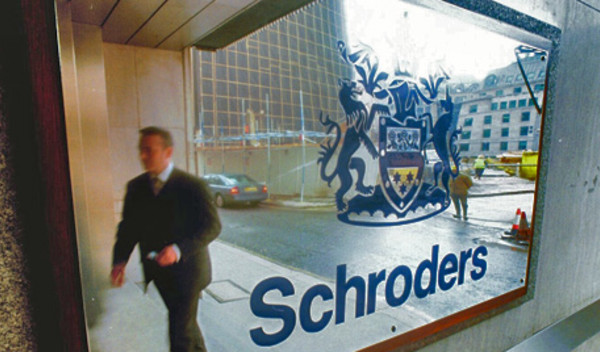

Almost half of those withdrawing money from their pensions may be doing so at an unsustainable rate, according to Schroders analysis.
Earlier this month, the Association of British Insurers published data which suggested some savers are withdrawing too much money from their pension pots too soon, as payouts reached £8.2bn in the year since the at-retirement reforms.
In the first three months of this year, marking the final quarter in the first full-year since the freedoms were introduced in April 2015, 4 per cent of UK savers - or 3,379 people - had withdrawn at least 10 per cent of their pots.
According to Schroders, withdrawing from a pension pot at that rate would involve taking out 40 per cent a year, meaning that it would be wiped out in two and a half years.
At the time, the ABI said most savers were taking a “sensible approach”, with 57 per cent of pots seeing only 1 per cent of their value withdrawn in the quarter, equivalent to 4 per cent a year.
However, it noted the data did not show whether those who were withdrawing at higher rates had other income to fall back on.
| Pension pots (£) | Withdrawal in Q1 2016 | Equivalent annual rate of withdrawal | Proportion of total |
| 45,641 | 0 - 1% | 0 - 4% | 57% |
| 16,134 | 1 - 2% | 4 - 8% | 20% |
| 10,500 | 2 - 4% | 8 - 16% | 13% |
| 1,822 | 4 - 6% | 16 - 24% | 2.3% |
| 1,423 | 6 - 8% | 24 - 32% | 1.7% |
| 835 | 8 - 10% | 32 - 40% | 1% |
| 3,379 | 10% plus | 40% plus | 4.2% |
Source: ABI and Schroders 16/08/16
The ABI voiced concerns that savers taking more than 10 per cent in just three months, assuming no other sources of income, is far too high.
At this rate, a £100,000 pot would be reduced to £60,000 after a year and would be gone in two and half years, or maybe a month or two longer, if a little investment growth is included.
According to more moderate scenarios, one in five pots is seeing withdrawal rates of 4 per cent to 8 per cent, if the figures are annualised.
As such, a £75,000 pension paying income of £500 a month, which is £6,000 a year or a withdrawal rate of 8 per cent, would be exhausted in 13 years and eight months, based on calculations by the Money Advice Service.
Historically, a rule of thumb in the US has been that 4 per cent is the optimal amount to withdraw from a pension, and that taking any more runs the risk of the pot dwindling and running dry within 30 years.
Earlier this year, research conducted by Morningstar challenged this assertion, citing data from at least for countries outside the US which had seen periods of lower investment returns.
Sheila Nicoll, head of public policy at Schroders, said it is important for people to use the guidance available, and to take independent advice.
“People should not underestimate how much money they may need – some people may live more than thirty years after retirement – so what sounds like a large lump sum doesn’t sound quite so large when spread across that kind of period,” she added.
Robin Stoakley, managing director of UK intermediary at Schroders, said: “Taking anything more than the natural rate of income thrown off by a portfolio potentially reduces the real value year on year – anyone taking too much early on is exacerbating the issue.”
He pointed out the UK stock market yields around 3.5 per cent today, so it can be tempting to take too much too soon. “They need to manage their portfolio as a farmer manages a field – overwork it today and it will yield a worse crop in the years that follow.”
ruth.gillbe@ft.com



